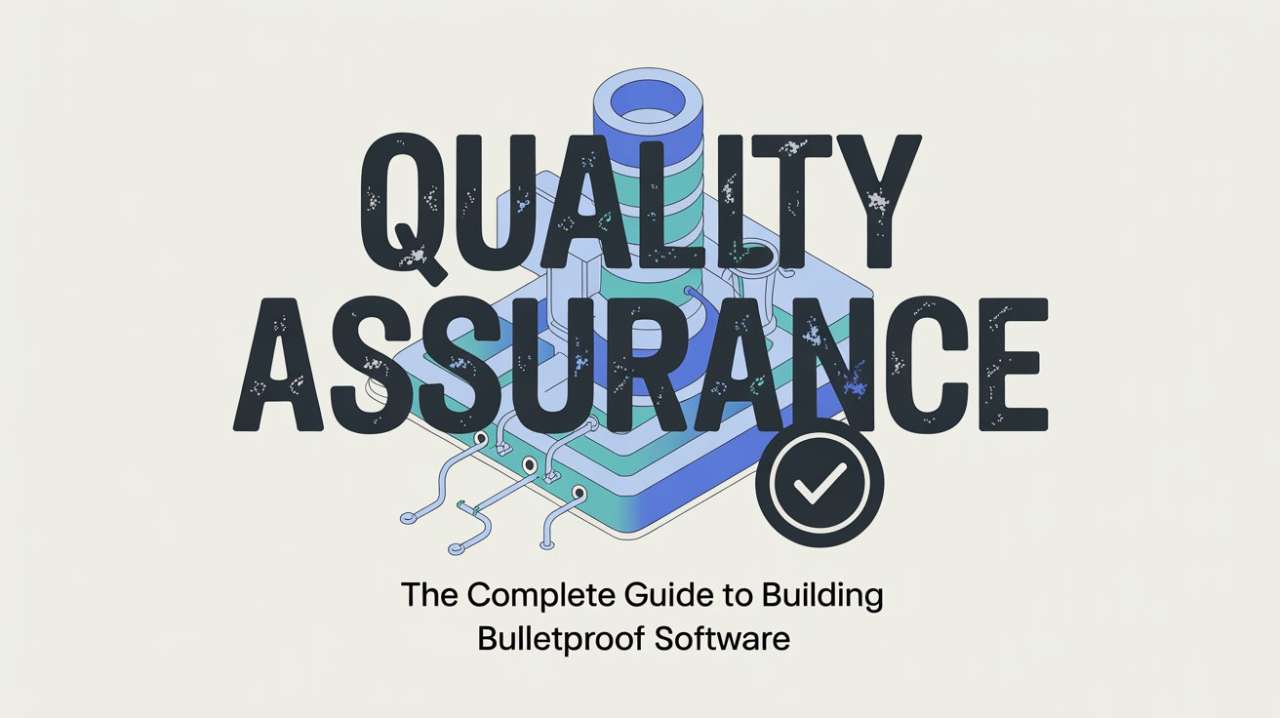 WEB TESTING
WEB TESTING Quality Assurance: The Complete Guide to Building Bulletproof Software (2025)

💡 The $50 Million Wake-Up Call
Three years ago, I watched a Fortune 500 company lose $50 million in revenue during a single weekend. The culprit? A misplaced decimal point in a payment processing module.
The Reality:
- Poor software quality costs $1.7 trillion annually
- One small oversight can destroy years of work
- QA isn't just about finding bugs—it's about preventing disasters
🔍 What Is Quality Assurance?
QA vs QC - The Key Difference:
- QC = Installing airbags in a car (reactive)
- QA = Designing the car to avoid crashes (proactive)
Quality Assurance encompasses the entire process of ensuring software meets requirements and functions correctly in real-world conditions.
📈 The Four Pillars of Modern QA
1. 🛡️ Prevention Over Detection
- Fix bugs during development = 10x cheaper than post-release
- Focus on code reviews and early testing involvement
2. ⚡ Risk-Based Testing
- Can't test everything with limited resources
- Focus on critical business functions and complex integrations
3. 🔄 Continuous Improvement
- Conduct retrospectives after every release
- Result: 60% reduction in defect escape rates
4. 👥 Customer-Centric Quality
- Technical perfection ≠ User satisfaction
- Focus on solving real problems, not just meeting specs
🏗️ My 5-Phase QA Framework
Phase 1: 📋 Requirements & Planning
- Collaborate with stakeholders on acceptance criteria
- Create comprehensive test strategy
- Time invested here reduces testing effort by 30-40%
Phase 2: 🎯 Test Design
- Create clear test cases with detailed steps
- Use infrastructure-as-code for consistent environments
- Maintain clean, realistic test datasets
Phase 3: ⚙️ Test Execution
- Combine scripted + exploratory testing
- Monitor automated tests closely
- Document observations, not just results
Phase 4: 🐛 Defect Management
- Classify by severity (system impact) and priority (business urgency)
- Provide detailed reproduction steps
- Track metrics for process improvement
Phase 5: 📊 Closure & Reporting
- Create traceability matrices
- Conduct retrospectives for continuous learning
- Measure quality metrics and business impact
🧪 Essential Testing Types
Functional Testing 🔧
- Unit Testing: Component-level verification
- Integration Testing: Where most critical bugs hide
- System Testing: Complete application examination
- UAT: Final business validation
Non-Functional Testing ⚡
- Performance: Non-negotiable in today's market
- Security: Involve experts early, threats evolve rapidly
- Usability: Perfect functionality can fail if users can't figure it out
- Compatibility: Critical across device proliferation
Specialized Testing 🚀
- API Testing: Essential for microservices
- Mobile Testing: Handle device fragmentation and network conditions
- Accessibility: Improves usability for everyone
🛠️ My Tool Recommendations
Test Management
- TestRail: Intuitive interface, robust reporting
- Zephyr: Best Jira integration
- qTest: Advanced analytics
Automation
- Playwright: Speed + reliability for web testing
- Postman: User-friendly API testing
- JMeter: Open-source performance testing
CI/CD Integration
- Jenkins: Maximum flexibility
- GitLab CI: Integrated platform simplicity
Key Principle: Choose tools that fit your workflow, not vice versa.
🏅 QA Best Practices
Build Quality Culture 🌟
- ✅ Executive commitment to quality over speed
- ✅ Cross-functional collaboration (devs + testers)
- ✅ Psychological safety for reporting issues
Automation Strategy 🤖
The Automation Pyramid:
UI Tests (Few) Integration (Some) Unit Tests (Many)
What to Automate:
- ✅ Smoke tests, regression tests, repetitive scenarios
- ❌ Complex workflows with frequent changes
Maintenance: Allocate 20-30% of effort to keeping tests current
Continuous Testing 🔄
- Shift-Left: Catch issues early (cheaper fixes)
- Shift-Right: Production monitoring and chaos engineering
- Track application behavior and user experience
Key Metrics 📊
- Test coverage (quality > quantity)
- Defect density and escape rates
- Customer satisfaction scores
- Cycle time optimization
🚧 Common Challenges & Solutions
Resource Constraints ⏰
- Solution: Risk-based prioritization + strategic automation
- Communicate limitations clearly to stakeholders
Technical Debt 💸
- Solution: Add tests during maintenance
- Regular test suite cleanup and obsolete test retirement
Team Collaboration 🤝
- Solution: Embedded QA engineers + shared documentation
- Translate technical concepts to business terms
Keeping Current 🚀
- Solution: Weekly exploration time + team experimentation
- Internal tech talks and knowledge sharing
🔮 The Future of QA
AI & Machine Learning 🤖
- Intelligent test generation from requirements
- Predictive analytics for defect-prone areas
- Self-healing tests that adapt to changes
Quality Engineering Evolution 📈
- Shift from separate QA teams to full-stack quality ownership
- Quality built-in from development start
- Better DevOps alignment
Emerging Trends 🌊
- Testing in production: Feature flags, chaos engineering
- Cloud-native testing: Container-based environments
- Microservices strategies: New architectural challenges
🎯 Your QA Action Plan
Step 1: Assess Current State 🔍
- Identify biggest quality pain points
- Measure current defect rates
- Evaluate team collaboration
Step 2: Build Foundation 🏗️
- Secure leadership commitment
- Foster cross-team collaboration
- Establish quality metrics
Step 3: Implement Systematically ⚙️
- Start automation with high-value scenarios
- Build gradually with maintenance focus
- Train team on chosen tools
Step 4: Measure & Improve 📊
- Regular retrospectives
- Data-driven decisions
- Process refinements
🏆 Key Takeaways
Success Factors:
- Treat QA as strategic business function
- Invest in people and culture
- Measure and improve continuously
The ROI:
- ✅ Customer trust
- ✅ Reduced technical debt
- ✅ Sustainable growth
- ✅ Competitive advantage
Remember:
Quality is a journey, not a destination. Excellence isn't perfection—it's consistency in delivering software that meets user needs while maintaining development velocity.
The investment you make in robust QA practices today determines your competitive position tomorrow.
Start with one section of this guide and build momentum. Quality excellence is a marathon, not a sprint—but every step forward brings measurable improvements.